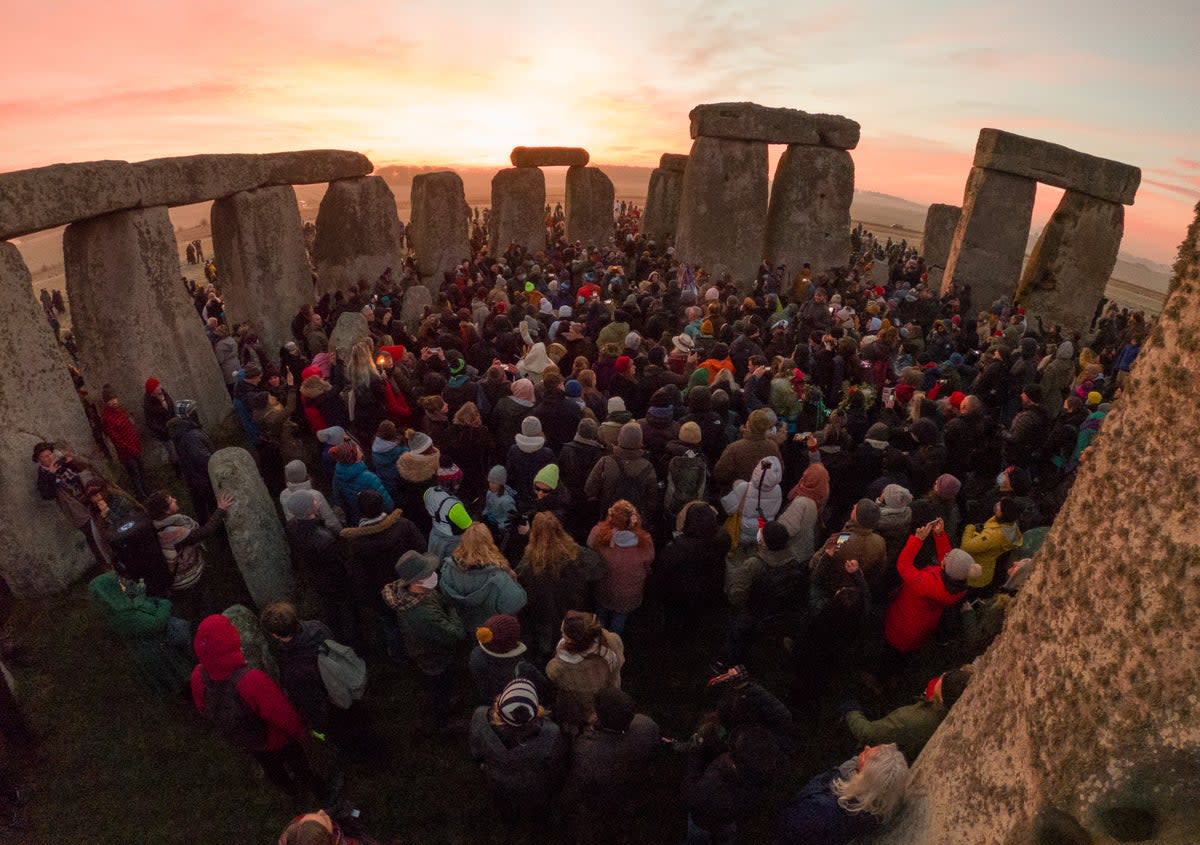Winter Solstice: the myths and cultural celebrations surrounding it

The winter solstice, which marks the shortest day of the year in the northern hemisphere, fell on December 22 this year.
It is in some parts of the world also referred to as the hibernal solstice, which happens when either one of the planet’s poles reaches its maximum tilt away from the Sun.
The winter solstice occurs when the Sun is at its lowest point in the sky, the minimum point for the Northern hemisphere. From this point, days lengthen as the nights shorten, until the equinoxes, when days and nights are of equal length.
The actual moment of the solstice this year was at 3.27am in the UK. The shortest day in London is roughly seven hours, 49 minutes and 42 seconds, meaning the length of the day during the winter solstice is much shorter that the summer solstice by about eight hours, 49 minutes. By contrast to the winter solstice, the summer solstice simply refers to the longest day of the year, when the Earth tilts towards the sun, rather than away from it, the maximum.
Throughout the ages, the sun, an essential factor in our survival, has played a prominent role in our way of life, beliefs and celebrations.
Meteorologically, we equate colder days and darker evenings with winter’s arrival. But, astronomically, the season doesn’t start until the winter Solstice.
It is named after the Latin words “sol” and “sistere”, which mean “sun” and “to stand”, referring to the day the sun stands still because the apparent movement of the Sun's path north or south stops before changing direction.
Our days, months, and years are defined by the warmth and light it provides. As such, it’s not surprising that there are so many legends and festivals about it.
Myths and legends about the winter solstice
In ancient times, tribes in the northern hemisphere knew winter meant dying crops, freezing temperatures, and short days.
However, without the necessary scientific knowledge, they weren’t able to decipher what was causing the sun to appear less. As such, they created their own legends and beliefs around it.
The sun was always seen as a feminine figure. The pre-Islamic southern Arabians called her Atthar. In Mesopotamia, she was Arinna, the Queen of Heaven. To the Vikings, she was Sol, to the Inuit the sun was Sun Sister — and the list goes on.

Some Nordic communities believed that the winter solstice was when their goddesses would give birth, bringing more light into our darkened world. That is why they called it “mothers’ night”.
The belief was prominent in other ancient nations, too. According to myths, the Egyptian goddess Isis’s son Horas and the Greek goddess’s son Apollo were both born on the winter solstice.
In Finnish mythology, the legend explained that Louhi, the witch goddess of the North, kidnapped the sun and moon, and held them captive inside a mountain, causing the dark days of winter.
In the Scottish Highlands, they called the winter solstice “Grian-stad Geamhraidh”, meaning “sun-stop winter”. They believed the winter was brought on by a hag-goddess named Cailleach.
She was described as a scary woman with long, white hair who was so much bigger than humans that the waters of the Sound of Mull would come up to only her knees.
To get rid of her and the cold weather she brought, Scots would carve her likeness into a wooden log and burn it, hoping it would banish her and lead to brighter times ahead.
According to Greek legends, however, the hairy, gnome-like creatures called Kallikantzaros, who live underground, love the winter and don’t want it to come to an end.
These beings can’t be exposed to sunlight as it kills them. Therefore, for most of the year, they are busy sawing the trunk of the world tree underground, hoping to collapse it with our planet.
But during winter, for a few days, it is dark enough for them to come out and cause mischief, making them forget all about their evil plan to end life as we know it.
As such, the myth says they wreak havoc until Epiphany in early January, when the sun starts moving again and they must go back into hiding.
This is when they realise that the world tree has healed itself during their absence, so they start their sawing all over again until the same cycle occurs next winter.

Festivals that celebrate the winter solstice
Given how vital the sun was to the survival of our communities, the winter solstice became one of the most important days in our calendars.
To make sure the sun would come back again with its warmth and glory, we created elaborate rituals and festivals around the winter solstice, the long and dark night that was the turning point of the sun’s journey back to us.
Different communities and cultures came up with different ways to entice and celebrate the day, most of which are observed by us today in one way or another.
Here are some of the most interesting ones:
Neolithic Europeans
Our ancestors valued the winter solstice so much that they built carefully aligned monuments for it, including Stonehenge in England and Newgrange in Ireland.
While Newgrange points to the winter solstice sunrise, Stonehenge marks the solstice sunset.
Scandinavian and Germanic communities
The pagans from these communities started the celebration of a winter holiday called Yule that, some say, was held as a sun festival on the winter solstice.
Some scholars believe that the celebration was a mid-winter one instead. And, as we know, it was eventually moved to be aligned with the Christian celebration, Christmas.
Middle Eastern people
To this day, some Iranian, Iraqi, and other Middle Eastern communities still celebrate winter solstice as “Yalda Night”.
It involves families coming together, usually at the house of the eldest, to eat, recite poetry, and serve foods that symbolise abundance, such as pomegranates.

 Yahoo News
Yahoo News 
